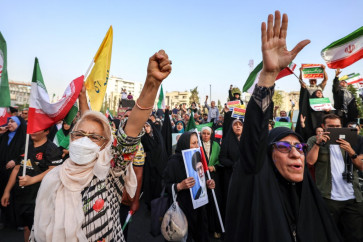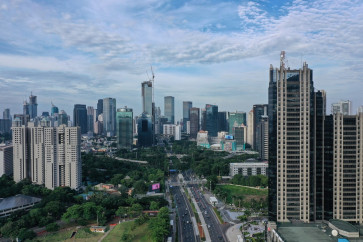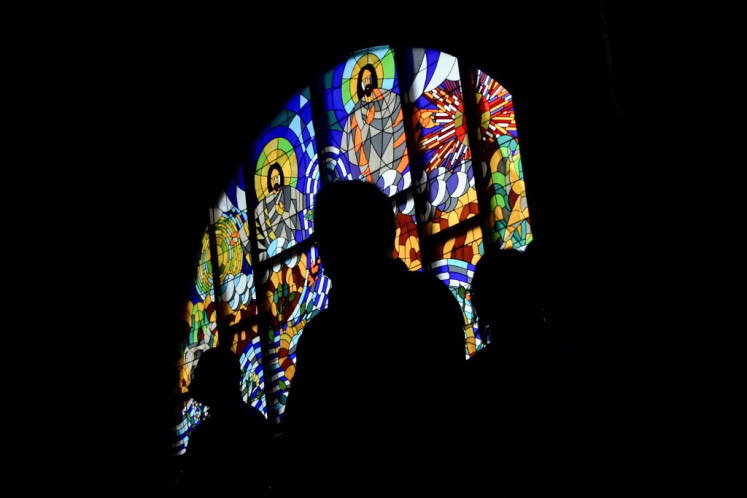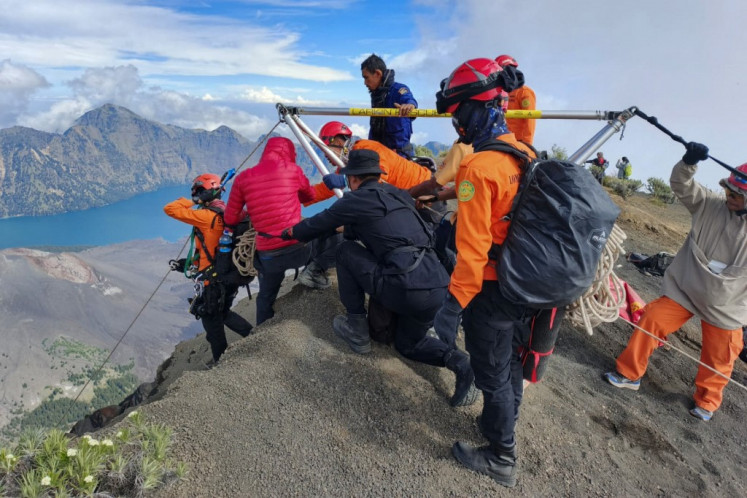Popular Reads
Top Results
Can't find what you're looking for?
View all search resultsPopular Reads
Top Results
Can't find what you're looking for?
View all search resultsThe transformative discipline of Ashtanga
I have just come back from studying Ashtanga yoga in Mysore, a town in the southern part of India, increasingly known as a yoga hub
Change text size
Gift Premium Articles
to Anyone
I have just come back from studying Ashtanga yoga in Mysore, a town in the southern part of India, increasingly known as a yoga hub.
Ashtanga, also known as the Ashtanga Vinyasa, is one of the most practiced yoga styles in the west. Its derivative has been called power yoga, though Ashtanga is much more than just a yoga of physical power.
It was developed by the late Shri K. Pattabhi Jois, one of the most prominent yoga gurus and teacher to celebrities including Madonna. Jois put together a system based on ancient Hatha Yoga text and what he learned from his guru Shri Krishnamacharya, the most influential modern day Hatha yoga guru whose disciples went on to develop different schools of yoga.
Ashtanga literally means eight limbs and was derived from the eight aspects of yoga, as explained in the ancient text Yoga Sutra. Like other schools of yoga, its purpose is to help practitioners grow towards enlightenment.
In this particularly dynamic style, the approach is based on a specialized sequencing of postures and focused breathing technique.
Ashtanga is characterized by a focus on vinyasa, or a dynamic connecting of postures, creating a flow between static traditional yoga postures. Vinyasa also implies the linking of movement to breath. The breath dictates the movement and the length of time held in the postures. Attention is also placed on the transition between the postures.
The purpose of vinyasa is to create heat in the body, which leads to purification of the body through increased circulation and sweating. You will sweat profusely when you do Ashtanga. The heat improves flexibility and strengthens the tendons and hard tissues, allowing you to practice advanced asanas (poses) with reduced risk of injury.
The whole practice is defined by six specific series of postures always done in the same order, combined with specific breathing patterns (the ujjayi breathing). But most people only manage to practice the first or second series, as the poses become much more advance as the series progresses.
A practice typically begins with 10 rounds of surya namaskara or Sun Salutations and some standing poses. This is called the opening sequence, before the actual series practiced by the student. It always ends with a back-bending sequence, a set of inverted postures and a few finishing poses in cross-legged seated lotus (padmasana).
When practicing Ashtanga, practitioners employ three bandhas or internal body locks. The bandha is a sustained contraction of a group of muscles that assists the practitioner not only in retaining a pose but also in moving in and out of it.
The mulabandha or root lock is done by tightening the muscles around the pelvic and perineum area and is engaged throughout the whole practice to protect the lower spine and allows you to feel compact and “light” as you move in and out of poses.
The uddiyana bandha is a contraction of the muscles of the lower abdominal area by bringing the navel to the base of the spine. This bandha supports breathing and encourages the development of strong core muscles.
Jalandhara bandha or throat lock is achieved by lowering the chin slightly while raising the sternum and the palate, bringing the gaze to the tip of the nose.
Another important aspect of Ashtanga is drishti or focused gaze. Every pose has its own assigned drishti to develop concentration. There are in total nine drishtis in the practice: the tip of the nose, the third eye (between the eyebrows), the navel, the extended hand, the toes, far to the right, far to the left, the thumbs and upwards.
Traditionally, Ashtanga yoga is taught in Mysore style, which means a supervised self practice in which each student moves through the practice at his or her own pace and level while the teachers assist and adjust them. But it is more common these days to find classes devoted to a specific series (mostly the primary or half primary) guided by an instructor in a class setting.
Pattabhi Jois believes that awakening can be attained by one thing and one thing only: Practice. His most famous quote is: “Do your practice and all is coming.” Because of this Ashtanga is known as the yoga of the gung-ho.
Traditionally Ashtangis practice six times a week bar Saturday and moon days (which means either new moon or full moon, and, if you’re a women, menstruation days). It is a strenuous discipline that aims at training the physical body to be strong, the mental body to be in complete awareness, and the spiritual body to surrender. It is not for the faint-hearted, though most people practice the watered-down version. It is learning by doing, and also learning to get to know oneself through progressive self study.
Pattabhi Jois never advertised his brand of yoga. Just like the traditional Indian gurus before him, he didn’t evangelize nor preached the gospel of yoga. He just taught those who came to him to learn. But his path to yogic stardom began when some itinerant western hippies in the 60s came knocking on his door seeking enlightenment in body bending. When these people returned to their respective countries, they spread the life-transforming discipline and made many believers.
More and more people went to Mysore to learn more – so much so that the family had to move the shala (or the yoga center) to a bigger house – helping ushering the era of Mysore as the mecca of Ashtanga yoga, where thousands of new and returning yogis make their pilgrimage here, some annually. He has literally and singlehandedly put Mysore on the map, bringing all sorts of good business to this part of India, and inspiring a host of other local yoga teachers to offer their own Ashtanga and non-Ashtanga-based brand of yoga.
Jois died last year and his grandson, Sharath, who had been groomed to take over, is now running the KPJAYI center and teaching along with his mother Saraswathi. But Jois’ legacy continues. He once said that yoga is 99 percent practice and 1 percent theory. The theory part was developed later by his western disciples who broke down the art and science of Ashtanga yoga for those rational minds. And this is still the way it is being passed on to the students.
Ashtanga vinyasa is a journey that will transform you physically, mentally and, eventually, spiritually.
Namaste.
Janusirsasana or head to knee / Nurcahaya Uli










